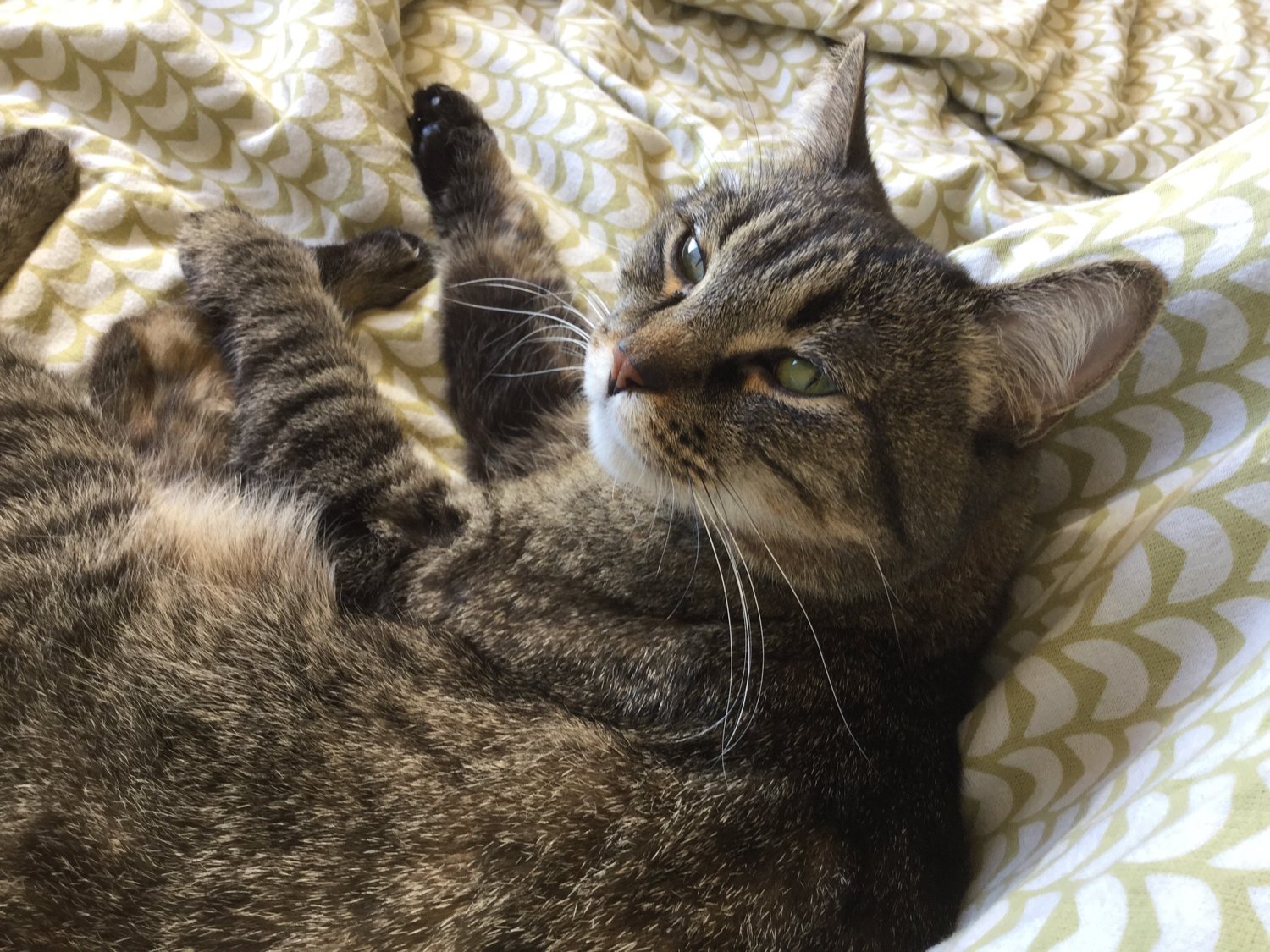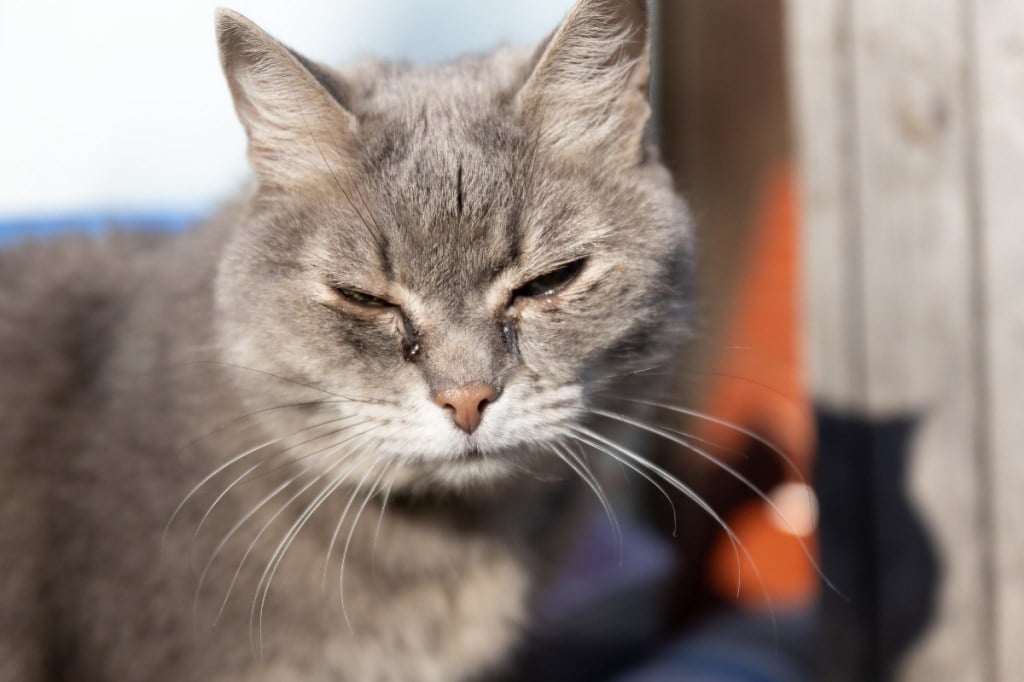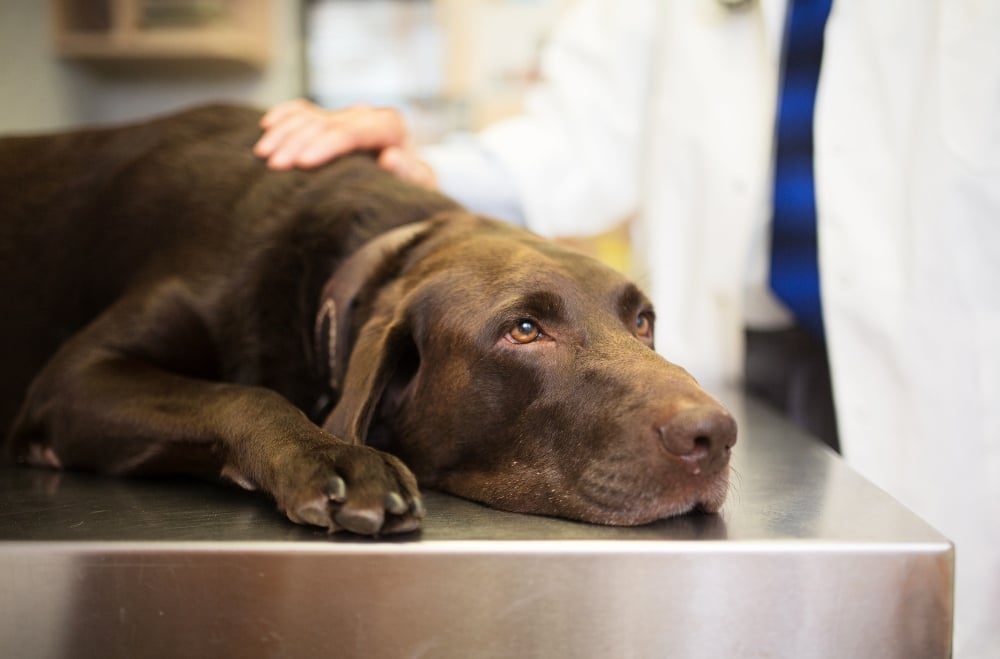Key Takeaways
- Bugs the cat had mysterious symptoms for months but it kept getting misdiagnosed.
- Finally, she was diagnosed with feline herpes virus, which is most commonly spread through cats’ eye and nasal discharge from other cats.
- The main symptoms are recurring respiratory infections, marked by sneezing, eye and nose discharge, fever, lethargy, and loss of appetite.
Since my cat Bug’s adoption in January 2015, she’s suffered from mysterious sniffles, excessive scratching, and sores. Almost as soon as we brought her home from the shelter, Bug curled up in a ball. Wherever we were, she was too: burrowing under the comforter, playing video games on the futon. When sniffling turned to sneezing and then to wheezy coughing – and after the umpteenth kitty sneeze to the face – I took her to the vet.
An initial diagnosis of bordetella – better known as kennel cough – led to two injections of the antibiotic Convenia. Whether it was time or medication is anyone’s guess, but Bug improved after about two months. Recurring kitty colds were relatively mild, cleared up with plenty of snuggles and bathroom steam sessions.
Always a fastidious groomer, we chalked her behavior up to the ever-idiosyncratic of “Princess” Bug. (We had already discovered her hobbies included licking potato chips and nibbling on toes.) But when we discovered two tiny scabs on her neck and chest, we knew something was wrong. The vet suspected environmental allergies, but we hadn’t changed her cat food or environment at all. A course of Prednisone, a corticosteroid, seemed to clear up the sores, but again, it can be hard to distinguish the effects of meds from time.
The holidays hit, and Bug stayed with my parents for a week while I visited my boyfriend’s family across the country. They love Bug, who my mom calls their “grandkitty,” but that sentiment is not shared by my childhood cat, now 16 years old. Little Dickster is a crotchety senior kitty, set in his ways. He tolerates their deaf dog, Molly, who at 12 years old poses no threat to his dominance over the household. The two felines eventually settled into a peaceful existence, but it was no easy feat for Bug or Dickster.

After returning back to our apartment, Bug again came down with the sniffles. This time, it was accompanied by violent head-shaking and scratching, mainly of her right ear. Her eye boogers reached serious levels of ickiness, and poor Bug was squinting, her sinuses were so congested. With all the clinics closed, I was forced to wait until after the New Year weekend.
We tried a new veterinarian closer to home. Bug’s medical records in hand – thanks, pet insurance! – we were seen at 10am the day they opened. She weighed in (7.7 pounds) and after being swaddled in a towel, Bug was much more amenable to an ear exam. The vet reported her right ear showed signs of inflammation, but an ear swab tested negative for a bacterial infection or mites.
After reviewing Bug’s medical history, the veterinarian gave a diagnosis of feline herpes virus.
What is cat herpes?
Just as in humans, feline herpes is caused by a virus. (However, animal and human strains are different and not zoonotic.) Highly contagious, herpes is most commonly spread through cats’ eye and nasal discharge. Sharing food, water or a litter box with an infected feline increases risk of transmission, as does mutual grooming. Cat herpes is very common in animal shelters and anywhere multiple cats are found. Even if a feline has no symptoms they can still carry the cat herpes virus, only showing symptoms during times of stress.
The vet speculated that Bug had been infected with the herpes virus during her time in the animal shelter – she was in the “cat colony” room – and her recent clash with my parents’ cat had caused an outbreak.
Symptoms of Cat Herpes
Our cat’s main symptoms have been recurring respiratory infections, marked by sneezing, eye and nose discharge, fever, lethargy, and loss of appetite. Many cats with the herpes virus will develop eye ulcers or lesions around the eyes. A weakened immune system makes feline herpes sufferers more susceptible to secondary infections, like conjunctivitis (pink eye). Kittens, cats with flat faces, and pets with weak immune systems may have more severe symptoms of cat herpes.
In Bug’s case, she had sores on her chest and neck that became mildly infected, requiring steroids to treat. For her most recent ear inflammation, EnteDerm ear drops were prescribed to hopefully reduce her pain.
Cat Herpes Treatment

There is no cure for the feline herpesvirus, only management of your pet’s lifestyle and treatment for outbreaks. Medications like antibiotics and various drops or creams may be prescribed by your vet to treat infections and reduce your pet’s pain. Minor kitty colds – upper respiratory infections, if you’re feeling fancy – can be treated at home. If your cat is showing signs of nasal discharge or acting lethargic, visit the vet just to be safe. With a nutritious diet and plenty of exercise to maintain a healthy lifestyle, cat herpes is easily manageable and won’t affect your pet’s lifespan.
Bug was prescribed Immune Support Plus treats containing lysine (an amino acid) and DMG (an antioxidant). Whether she’ll tolerate two treats twice daily remains to be seen; they’re chicken-liver, and she’s more of a beef-salmon kind of girl. (Princess Bug!)
The content is not intended to be a substitute for professional veterinarian advice, diagnosis, or treatment. Always seek the advice of your veterinarian or other qualified health provider with any questions you may have regarding a medical diagnosis, condition, or treatment options.








